The Urban Circular Bioeconomy
Cities and regions are at the vanguard of circular bioeconomy systems.
Largely as a result of exploitative capitalism, the linear economy of extracting, producing, consuming, and discarding materials has dominated our lives for the past centuries. But now, as we go deeper into the 21st century, things are changing. Irrevocably, we are moving towards a more circular economy – a system in which materials and waste are reduced and recycled in order to be reused and repurposed into new products. Of course, it’s not possible to reuse or recycle every element of a given material, meaning that there will always be waste at some level – even the energy and water used to repurpose old materials into new products can be wasteful if not used efficiently. But systems are changing now.
The entire design thinking of systems is changing, and with it a general mind shift is occurring: a collective realization that we cannot be so wasteful all the time anymore. It is well known now that just 100 companies are responsible for 71% of global carbon emission. This may seem daunting to consider the enormity of this fact, but as individuals we can make small changes to adjust our habits. Local authorities can encourage citizens and residents to take simple actions like separating their waste, an essential step to enable high quality recycling. National governments can pass legislation to ensure companies respect environmental standards and take more responsibility for the products entering their markets, while supranational entities can regulate the system to make sure that the standards are more homogenized across countries.
Cities and regions have a primordial role to play as the world is rapidly urbanizing, resulting in ever-increasing resource requirements and pollution flows. It is now estimated that cities are responsible for 80% of global energy consumption and more that 40 billion tons per year (since 2010) of materials are extracted-transformed-transported by urban technical networks. As a consequence of this mobilization of matter and energy, cities are also responsible for 65% of global atmospheric emissions.
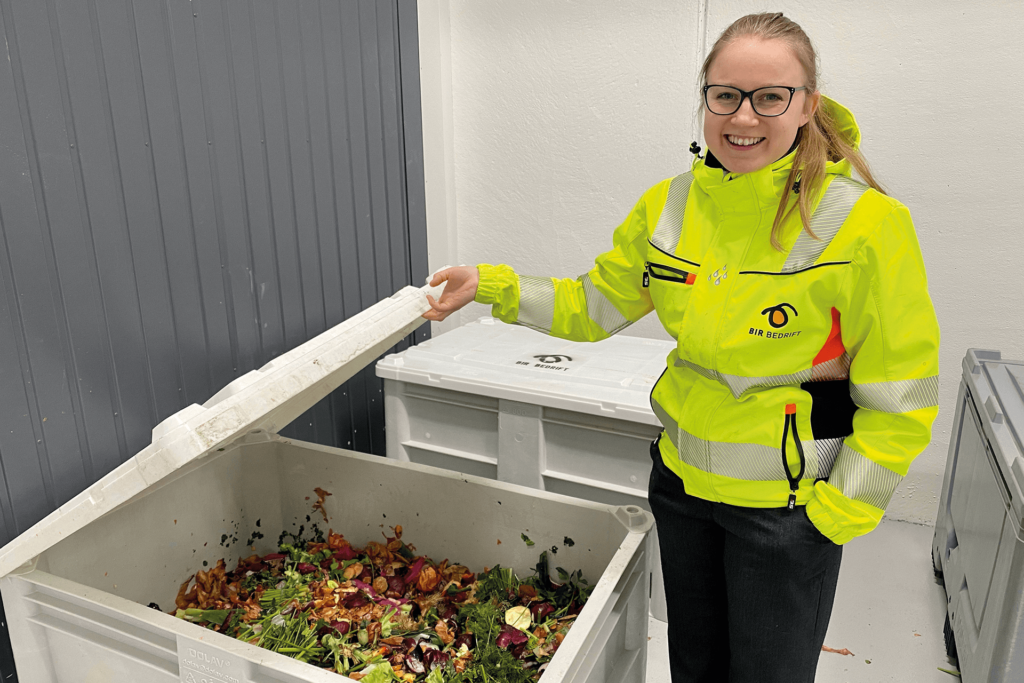
People are starting to seriously rethink urban systems and how our cities operate, logistically and with the environment and efficiency in mind. Moreover, the way we live, and the amounts we consume, are alarming: per capita waste by consumers is between 95-115 kg a year in Europe and North America, while consumers in sub-Saharan Africa and South-East Asia throw away only 6-11 kg a year. As around half of our waste is organic materials, this is where the urban bioeconomy comes into play by looking at how cities and regions can recover valuable resources from our food waste (leftovers from meals, garden waste and unsold produce) and our wastewater (from household washing and cleaning). What happens to our food leftovers when they are collected by trash trucks? What happens to the shower water after it goes down the drain into the wastewater pipes? Where does it go? Increasingly, wastewater and food waste are going towards processes that can extract the resources to make new products for industries such as agriculture: food waste can be broken down and processed into bio-fertilizers that are more natural and better for the environment.
Roughly one-third of the food produced in the world for human consumption every year – approximately 1.3 billion tonnes – gets lost or wasted.
Source: UNEP
Spearheading circular bioeconomy systems
2018 EU Bioeconomy Strategy anticipates cities becoming major circular bioeconomy hubs, where biowaste is a feedstock for safe and sustainable bio-based products. As well as the aforementioned moral and environmental imperative to reuse and recycle materials, the strategy also puts forward the economic case, highlighting Amsterdam where they estimate that better use of organic residue streams in the city could generate 150 million euros per year and create 1,200 new jobs.
To help make this a reality across the continent the European Commission has allocated a sizeable chunk of research and innovation funding to the topic over the past decade. Numerous EU-funded Horizon 2020 projects have focused on developing the innovative processes that will be needed to transform biowaste into more valuable products. SCALIBUR, ValueWaste and WaysTUP!, to name but a few, are bringing technologies out of the lab and closer to commercial deployment. And who knew so many products can be made from biowaste? Bioplastics from food scraps, chemicals from coffee grounds, using insects to create protein rich animal feed… the possibilities are endless.
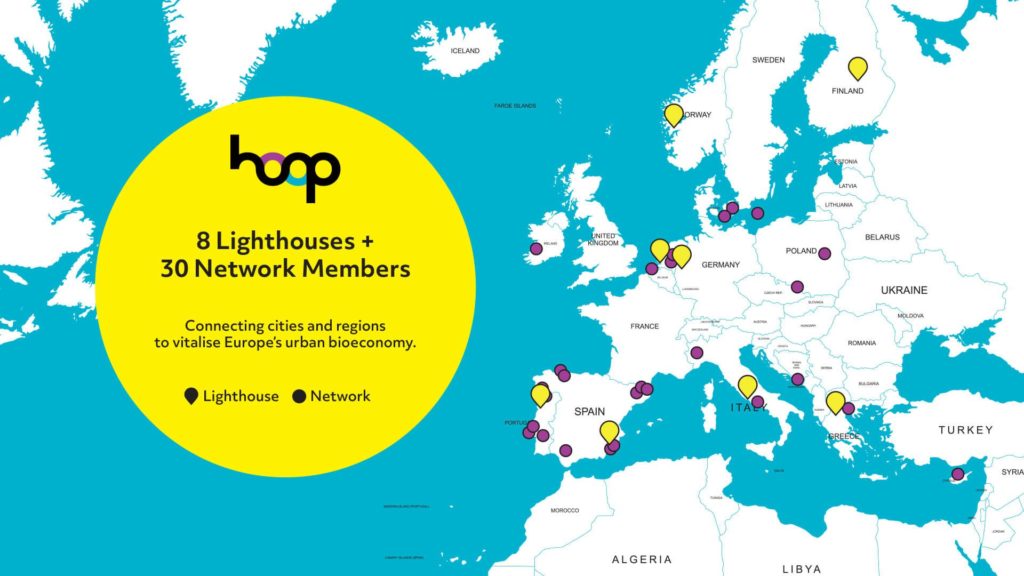
We are now at a crucial juncture though. Proving these technologies work is one thing, seeing them widely deployed presents a whole new set of challenges. Being an early adopter of any innovative technology – being the first to try something new – always carries a certain level of risk. And this risk can be hard to justify for the, mostly public, organizations that manage our waste.
That’s where HOOP comes in. The HOOP project is giving project development assistance (PDA) to eight lighthouse cities and regions, supporting them to prepare large scale investments in innovative solutions for biowaste valorization. This tailored guidance will help unlock over 50 million euros of investment, and hopefully pave the way for others to follow.
The PDA has many elements, starting by understanding the local context and ‘urban metabolism’ of the territory. The HOOP lighthouses also receive support with technological and environmental assessments, circular business models, and innovative financial engineering & procurement. An additional important element is the stakeholder engagement actions, which bring together all local actors to ensure that any future investment is in the interests of the wider community.
Outline of a circular economy
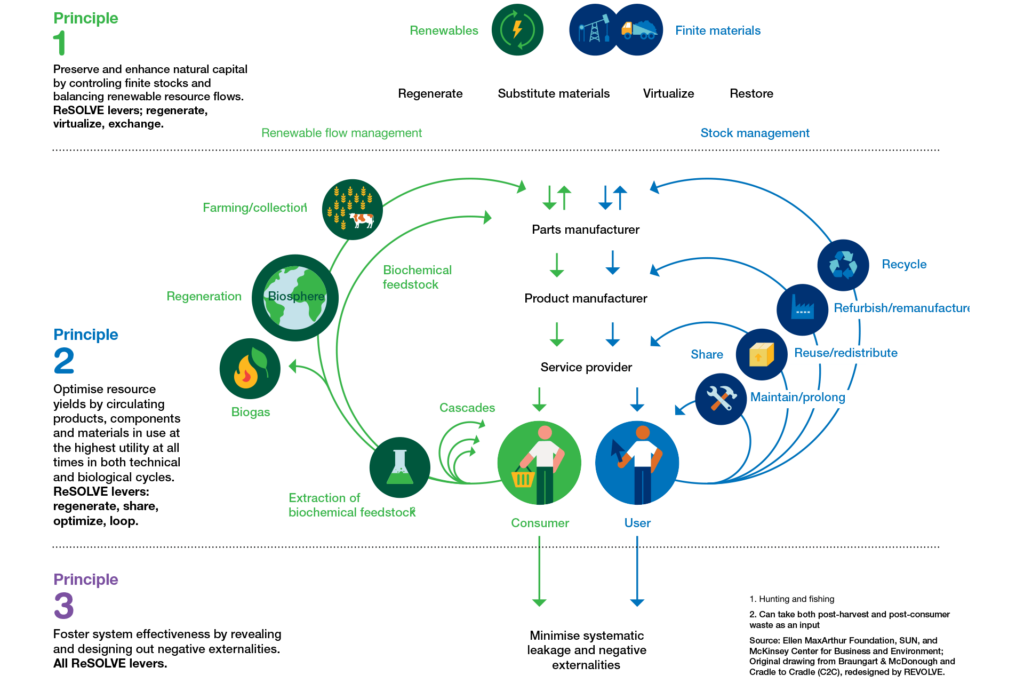
Alongside the work in the eight pioneering cities and regions, HOOP aims to have a pan-European reach and impact. The HOOP Circular Investors Board brings together leading investors in sustainable finance – ranging from small asset managers to the lending arm of the European Union, the European Investment Bank (EIB) – to help mainstream sustainable investments towards the urban circular bioeconomy. And to exchange knowledge among territories across Europe, partners have created the HOOP Network of Cities and Regions. The network is open to all organizations that plan, organize, or operate municipal waste management or wastewater treatment, for instance local or regional authorities or waste management companies. By joining, cities and regions gain access to information about innovative urban bioeconomy solutions and are engaged in knowledge sharing events and study tours.
The circular bioeconomy is an enticing prospect, one which can help alleviate a range of societal challenges – reducing our reliance on imported fossil-based materials, giving Europe greater energy independence, and limiting CO2 emissions – while also creating diverse green jobs across the Continent. Thanks to some pioneering cites and regions it could be coming to a town near you very soon!
What is Urban Metabolism?
Urban Metabolism (UM) is an interdisciplinary concept that studies how cities interact with the environment and more specifically how they use resources and emit pollution flows as well as the associated societal, economic and environmental challenges around these flows. UM research thus attempts to better understand the functioning of cities by characterizing and understanding all socio-technical and socio-ecological processes by which flows of materials, energy and water are consumed, transformed and rejected in different forms by cities.
Christopher Kennedy and fellow researchers produced a clear definition in their paper The Changing Metabolism of Cities (2007) claiming that urban metabolism is “the sum total of the technical and socio-economic process that occur in cities, resulting in growth, production of energy and elimination of waste.” With the growing concern of climate change and atmospheric degradation, the use of the urban metabolism model has become a key element in determining and maintaining levels of sustainability and health in cities around the world. Urban metabolism provides a unified or holistic viewpoint to encompass all of the activities of a city in a single model.
Visualization of territorial space in urban metabolism
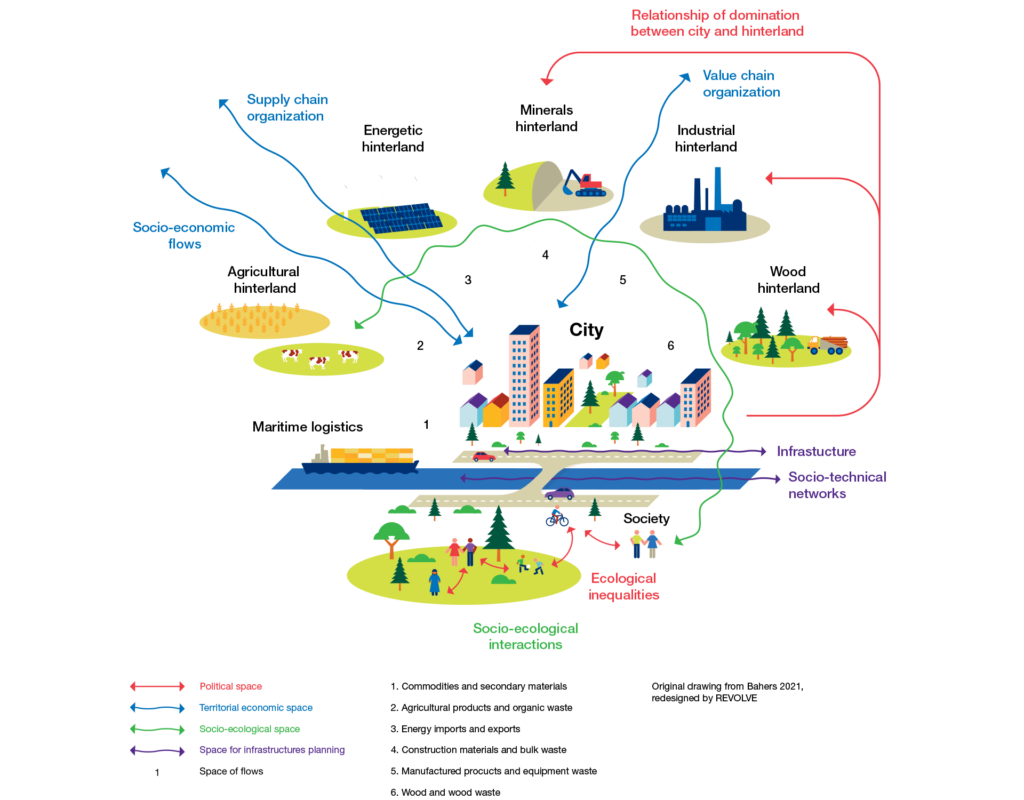
With the issue of sustainability at the core of many environmental issues today, one of the main uses of Urban Metabolism in the modern era is to track and record levels of sustainability in cities and regions around the world. Urban metabolism collects important and very useful information about energy efficiency, material cycling, waste management and infrastructure in urban environments. The urban metabolism model records and analyzes environmental conditions and trends which are easily understood for policy makers and consequently comparable over time making it easier to find unhealthy patterns and develop a plan of action to better the level of sustainability.
A conceptual framework for circular economy in cities and regions
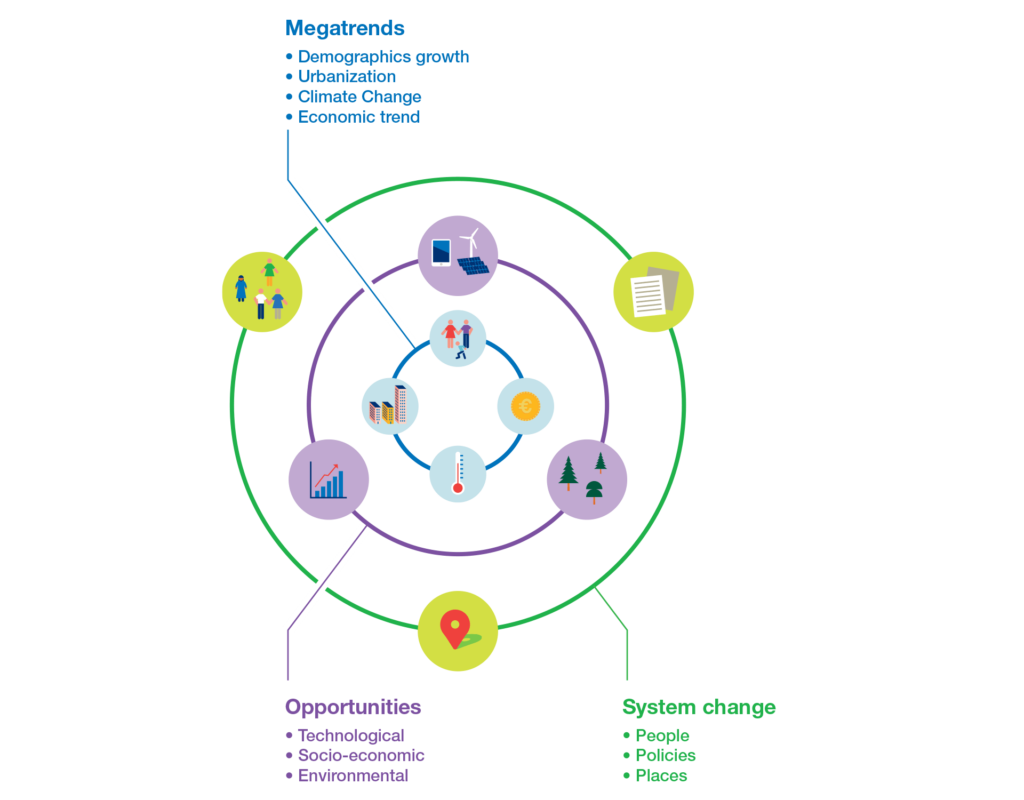
Resources suggested by REVOLVE
Dig deeper, discover more: